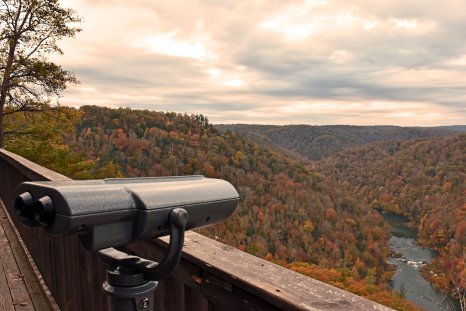Viking Age Norse people seeking walrus ivory in the High Arctic may have encountered Indigenous North Americans hundreds of years before Christopher Columbus "discovered" the continent, a study has hinted.
In medieval Europe, walrus ivory was a prized commodity and was supplied by Norse intermediaries who expanded across the North Atlantic in search of the product, establishing settlements in Iceland and Greenland in the process.
But the precise locations of where the traded ivory was sourced have long remained unclear. Now, a study published in the journal Science Advances has indicated that walrus ivory imported into Europe from Norse settlements in Greenland was harvested from very remote High Arctic hunting grounds.
Using high-resolution genetic sourcing methods, the research team was able to pinpoint specific hunting grounds in the High Arctic, especially the North Water Polynya—an area of open water surrounded by sea ice that lies between Greenland and Canada in northern Baffin Bay—and possibly from the interior Canadian Arctic. These areas are far beyond areas traditionally associated with the presence of Viking Age Norse people and their ivory harvesting activities.
The Viking Age was a period in medieval history roughly between the late 8th and 11th centuries when seafaring Norse people from Scandinavia, referred to as Vikings, raided, colonized and traded widely across Europe and beyond.
According to the authors, the results of the study support the idea that the Norse interacted with Indigenous peoples of the North American Arctic, and may have even exchanged ivory with them.
"There has been a lot of interest in Vikings and the walrus ivory trade in the last 10 years but it is very Eurocentric. We wanted to know what was happening out in the remote Arctic hunting grounds, especially where the ivory was coming from," study lead author Peter Jordan, with the Department of Archaeology and Ancient History at Lund University in Sweden, told Newsweek.
"We had no idea the walrus ivory was coming from such remote parts of the Arctic. This is big news. The exciting implication is that ivory shipped back to Europe was coming from remote High Arctic areas inhabited by Arctic Indigenous peoples," Jordan said.
When the Norse went to these places, they would likely have encountered other cultures and probably traded with them, especially the Thule Inuit, who are the ancestors of modern Inuit in Canada and Greenland.
The possibility of encounters between Norse people and Indigenous Americans has been discussed for some time, but the supporting archaeological evidence is ambiguous. The latest study though places Norse people and Thule Inuit in the same place at the same time, given that ivory was coming from remote areas where both groups operated. Another North American Arctic Indigenous group known as the Tuniit also may have been present in these areas at the time, according to the researchers.
While the study does not provide definitive proof of direct contact between the Norse and Indigenous North Americans, it does show that they overlapped in some places while searching for the same natural resource: walrus ivory. This provides further independent evidence for the long-debated existence of very early encounters between the European Norse and North American Indigenous peoples.
"Our results...suggest that the relationship between the European Norse and Arctic Indigenous peoples, particularly the Thule culture, was more complex than previously understood. Although further studies are needed, it has historically been difficult to confirm whether the Norse made contact with Arctic Indigenous cultures, such as the Tunnit and Thule Inuit, during their exploration of Greenland and Canada," study co-author Emily Ruiz-Puerta, with the Faculty of Health and Medical Sciences at the University of Copenhagen in Denmark, told Newsweek.
"However, the evidence from our study hints at potential trade interactions centered around the walrus ivory trade as a result of the Norse venturing further north."
Previously, debates about globalization in the Viking Age have tended to focus on valuable objects entering Europe from Western Asia, often via the famed Silk Road—a network of trade routes that stretched across Eurasia. But the latest study points to the existence of a significant "Arctic Ivory Road" that connected North America with European trade networks long before the era of colonization began in the 15th century.
"Our study shows that the Vikings regularly travelled the around 6,000 kilometers [about 3,700 miles] to Pikialasorsuaq in northwest Greenland, an area characterized by harsh climatic conditions. And they probably didn't do it for the thrill of it, but to obtain this precious commodity, which they brought to Northern Europe and other parts of the world," study co-author Morten Tange Olsen, with the Globe Institute at the University of Copenhagen, said in a statement.
The authors came to their conclusions after studying fragments of walrus skulls—found in European Viking villages, as well as settlements in Greenland and Canada—with the help of genetic "fingerprinting" techniques.
"We extracted ancient DNA from walrus samples recovered from a wide range of locations across the North Atlantic Arctic. With this information in place, we could then match the genetic profiles of walrus artifacts traded by Greenland Norse into Europe back to very specific Arctic hunting grounds," Olsen said in the release.
Do you have a tip on a science story that should be covering? Do you have a question about archaeology? Let us know via science@newsweek.com.
Reference
Ruiz-Puerta, E. J., Jarrett, G., McCarthy, M. L., Pan, S. E., Keighley, X., Aiken, M., Zampirolo, G., Loonen, M. J. J. E., Gotfredsen, A. B., Howse, L. R., Szpak, P., Pálsson, S., Rufolo, S., Malmquist, H. J., Desjardins, S. P. A., Olsen, M. T., & Jordan, P. D. (2024). Greenland Norse walrus exploitation deep into the Arctic. Science Advances. https://doi.org/10.1126/sciadv.adq4127
Disclaimer: The copyright of this article belongs to the original author. Reposting this article is solely for the purpose of information dissemination and does not constitute any investment advice. If there is any infringement, please contact us immediately. We will make corrections or deletions as necessary. Thank you.



